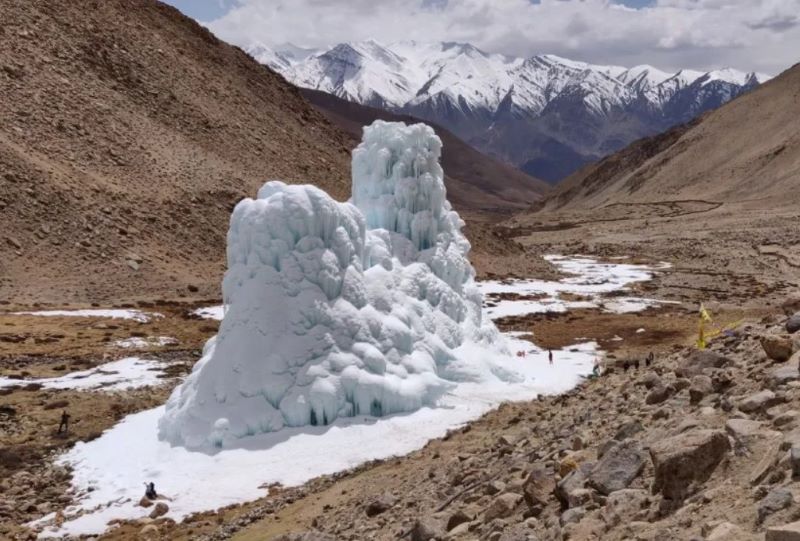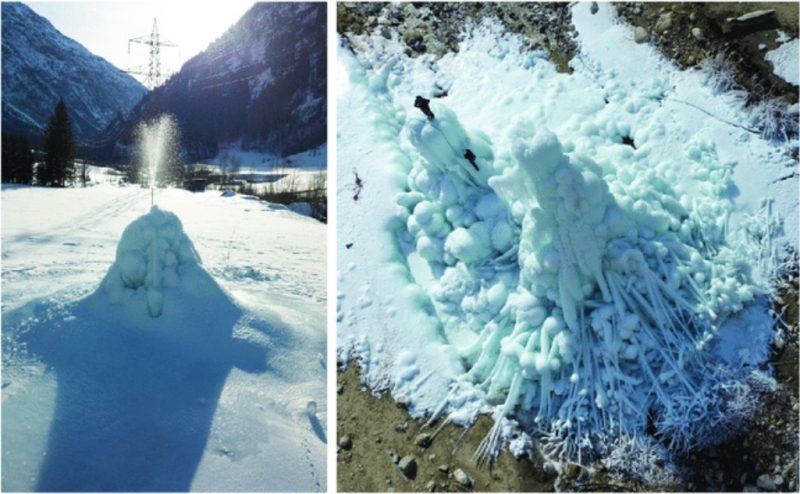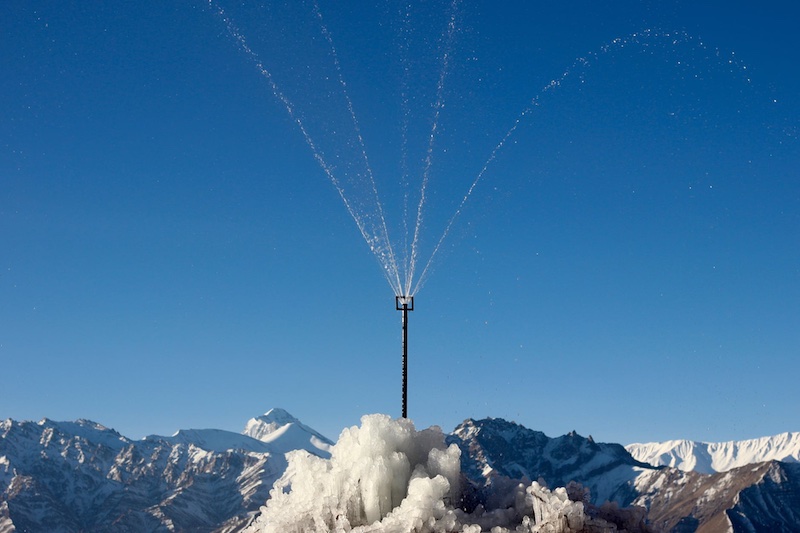
Originally published on June 23, 2022, at AGU – Advancing Earth and Space Science. The author is Liza Lester.
Artificial ice tower reservoirs
Towering artificial ice reservoirs – called ice stupas – emerged in 2014 as an accessible means of storing irrigation water in dry, high-altitude mountain villages. Now, experiments with automated systems demonstrate construction of these giant ice cones – which top 100 feet (30 meters) – uses about 1/10 the volume of water manual methods use. Scientists presented this new research on June 23, 2022, at the Frontiers in Hydrology meeting in San Juan, Puerto Rico.
In the high, arid region of Ladakh, India, this improvement makes all the difference. The original, manual approach to ice-stupa construction typically lets the water flow all winter. Most of the water does not freeze and is lost. Cold temperatures help ice stupas grow, but too cold temperatures freeze water in the delivery pipes.
Suryanarayanan Balasubramanian is a glaciologist at the University of Fribourg in Switzerland and the lead researcher on this project. Balasubramanian said:
In Ladakh right now, many of the ice structures have stopped being built not because the farmers chose to stop watering. It is because the weather chose to stop working.
Automation can build ice reservoirs that last longer
The best solution is to drain the pipe before it freezes. The new automated approach avoided blocked pipes. It uses information from models and weather data to predict the optimal water spray time, duration and flow rate to build ice stupas efficiently. Researchers also said they could apply the information manually.
Many ice stupas melt by summer, but larger, more efficiently shaped ice towers last into the following year. They could potentially become permanent structures that can provide a predictable water source year-round.
Balasubramanian said, referring to the new results:
The point of the experiment was to show that a better methodology exists to construct these structures and there are simple lessons that we can extract. Why is that important? It shows that these structures are limited in their potential right now. They can grow much bigger and last much longer and use much less water.

Cold storage ice tower reservoirs
Farmers make ice stupas by fountaining water into the air during the winter to fall and freeze into giant, icy stalagmites. The pipes and fountains needed to make these great ice cones are relatively inexpensive and easily obtained, which means farmers can implement them without outside aid. They can build large stupas from a flow rate of just 7.9 gallons (30 liters) per minute, or 2-3 times the flow of a typical garden hose, if applied consistently over months.
The method, first developed in Ladakh, India, is also in use in dry, high-altitude locations in Chile and Kyrgyzstan. Ladakh sits higher than 9,800 feet (3,000 meters) above sea level between the Karakorum range and the Himalaya and receives less than 4 inches (10 centimeters) of rain or snow each year. Irrigation networks in this arid region depend on timely meltwater from glaciers, snow and permafrost, which are increasingly unreliable in a changing climate.

Spraying less, spraying smarter
Balasubramanian and colleagues tested an automated system. It controlled how much water they sprayed, when and for how long, based on models and weather data. Preliminary results from drone measurements found the automated system dispensed 13% of the amount of water used by the manual fountain system to create ice stupas that delivered the same or more meltwater. The automated systems also did not require winter maintenance.
Although the automated system is currently outside the budgets of most farmers using ice stupas, Balasubramanian said:
…development and mass production could bring down the price and make the system easier to use. Lessons learned from the automation experiments about how to optimize the duration of spray and rate of water flow based on historical freezing rates in the locality could be applied by hand. We have just scratched the surface on these structures, because we only talk about Ladakh. But this is not just about this one location. It could be applied many places, some of which are much, much colder. We don’t know really what the upper size limit is.
Bottom line: Automation can build bigger and better ice tower reservoirs that use less water and last longer for farming use in dry, high-altitude locations.
Read more: Global climate change may impact crops within 10 years
Read more: Less ice for mountain glaciers. What’s it mean?
The post Better ice tower reservoirs for farming first appeared on EarthSky.
0 Commentaires